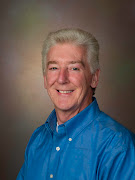Question:
What is the proper way to vent a clothes dryer?
Answer:
Here are some facts from the United States Fire Administration.
Dryer exhaust should vent directly outside the home. In some new homes, washers and dryers are placed in non traditional areas of the house, including upstairs bedrooms, hallways and closets. These new sites generally require longer dryer vents in order to reach an ouside wall and may contain sharp turns and bends that snake through the home.
Remember:
Dryer vents should not be longer than the equivalent of 25 feet ( five feet is added to the actual vent length for each 90 degree bend in the vent).
When lint has to pass through an exhaust that is under a floor or through walls and is more than 6 feet long, it is almost impossible for all the lint to be propelled out of the vent.
Lint can also accumulate in pockets along the vent where it is harder to reach and clean.
As a result, it is crucial for homeowners to regularly inspect and clean out the dryer vent. In fact, all manufacturers now state in their manuals not to use plastic flexible dryer ducts between the vent and the clothes dryer. However, many existing homes as well as some new construction, continue to use plastic flexible ducts. The plastic itself can provide additional fuel for a fire. Even flexible foil vents are not the best choice for venting clothes dryers. Flexible vents can sag, allowing lint to build up and catch fire if it comes in contact with a sufficient amount of heat. If a fire starts beneath the dryer when the motor overheats, then the drafts from the dryer can pull that fire up into the duct and venting, allowing a house fire to develop.
To avoid problems, make sure you disconnect, clean and inspect the dryer and venting at least once a year, or hire a professional company to clean the dryer components.
Welcome Home Inspection Services
http://www.welcomehomeinspections.ca/
Tuesday, February 24, 2009
Wednesday, February 11, 2009
Urea Formaldehyde Insulation- New Controversy
Urea formaldehyde foam insulation (UFFI) is again in the news. An Ontario Company has been ordered by the Federal Government to stop selling a formaldehyde based insulation that has already been installed in about 700 homes.
Justice Minister Rob Nicholson announced a “cease and desist “order against the company RetroFoam. Canada Border Services has also been alerted to stop further importation of the product.
The Company claims that its formulation is safe and is not the same as the Urea Formaldehyde Foam Insulation (UFFI) banned in 1980 due to potential health concerns related to elevated levels of formaldehyde following installation.
UFFI was extensively used in Canada between 1975 and 1978 and it is estimated that over 100,000 homes were insulated with UFFI during that time. Its use was eventually banned in December 1980.
The fear of health problems caused the federal government to set guidelines for reducing formaldehyde levels in houses. The initial threshold level set for formaldehyde gas was 1.0 part per million (ppm). As testing methods improved the level was reduced to 0.1 ppm. Interestingly subsequent testing found that formaldehyde gas levels in houses insulated with UFFI were well below the 0.1 ppm level and it became apparent that levels of formaldehyde decrease rapidly after the foam has been installed, typically returning to ambient house levels within several days.
Statistics showed in fact that of the homes tested, on average formaldehyde levels were slightly below that of homes of similar age without UFFI. The problems with UFFI were not substantiated and extensive testing has shown that health concerns appear to have been overstated. In my opinion home owners with the UFFI insulation that was installed in the 70’s need not be concerned and should continue to enjoy their homes.
It should be noted that formaldehyde is found in other building materials such as particle board, plywood, carpets and many other common items. If you have a concern about your indoor air quality, consult with a qualified Environmental Consultant or Air Quality Specialist.
Justice Minister Rob Nicholson announced a “cease and desist “order against the company RetroFoam. Canada Border Services has also been alerted to stop further importation of the product.
The Company claims that its formulation is safe and is not the same as the Urea Formaldehyde Foam Insulation (UFFI) banned in 1980 due to potential health concerns related to elevated levels of formaldehyde following installation.
UFFI was extensively used in Canada between 1975 and 1978 and it is estimated that over 100,000 homes were insulated with UFFI during that time. Its use was eventually banned in December 1980.
The fear of health problems caused the federal government to set guidelines for reducing formaldehyde levels in houses. The initial threshold level set for formaldehyde gas was 1.0 part per million (ppm). As testing methods improved the level was reduced to 0.1 ppm. Interestingly subsequent testing found that formaldehyde gas levels in houses insulated with UFFI were well below the 0.1 ppm level and it became apparent that levels of formaldehyde decrease rapidly after the foam has been installed, typically returning to ambient house levels within several days.
Statistics showed in fact that of the homes tested, on average formaldehyde levels were slightly below that of homes of similar age without UFFI. The problems with UFFI were not substantiated and extensive testing has shown that health concerns appear to have been overstated. In my opinion home owners with the UFFI insulation that was installed in the 70’s need not be concerned and should continue to enjoy their homes.
It should be noted that formaldehyde is found in other building materials such as particle board, plywood, carpets and many other common items. If you have a concern about your indoor air quality, consult with a qualified Environmental Consultant or Air Quality Specialist.
Subscribe to:
Posts (Atom)

.jpg)